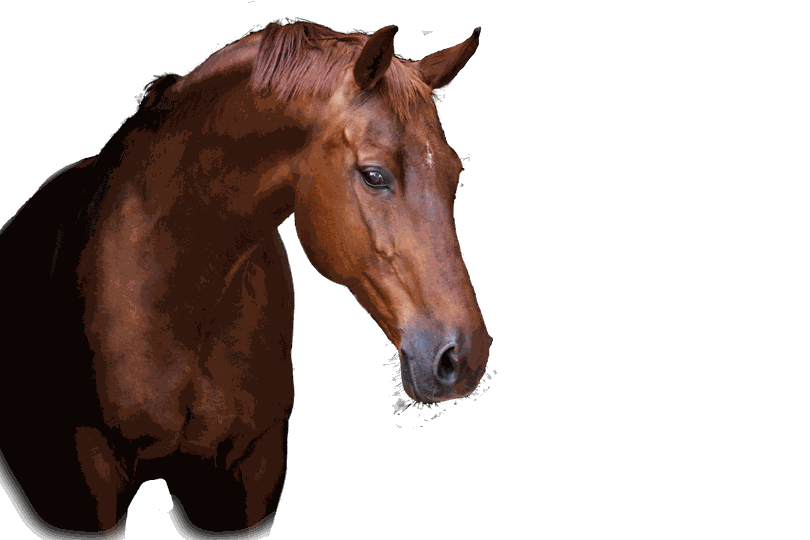
Academy / Häst / Hooves & Coat / Laminitis
Laminitis
If laminitis is suspected, a veterinarian and farrier should always be contacted.
Laminitis involves inflammation in the lamellae of the hoof, which leads to a separation between the coffin bone and the inner lamellar layer of the hoof wall. This causes the hoof to no longer bear the weight of the horse, and the structure of the hoof collapses. This can lead to sinking of the coffin bone or rotation of the coffin bone forward, causing damage to the laminae and the surrounding blood vessels. Laminitis can affect one or more hooves.
Symptoms of laminitis
Laminitis is extremely painful for the horse, and symptoms include lameness, warmth in the hooves, reluctance to walk, and signs that the horse is trying to shift the weight off its hooves. If laminitis is suspected, a veterinarian and farrier should always be contacted.
Causes of laminitis
Laminitis is a multifactorial disease, meaning that several factors may cause the disease to manifest. Improper feeding, trauma, hormonal imbalances, poisoning, and corticosteroid medication are some of the most common causes.
In addition to treatment by a veterinarian, the horse will also need care from a farrier. In consultation with the veterinarian, the farrier can help relieve pain by stabilizing the coffin bone and providing support. In the long term, the farrier will help maintain a functional hoof and monitor any changes in the hoof.
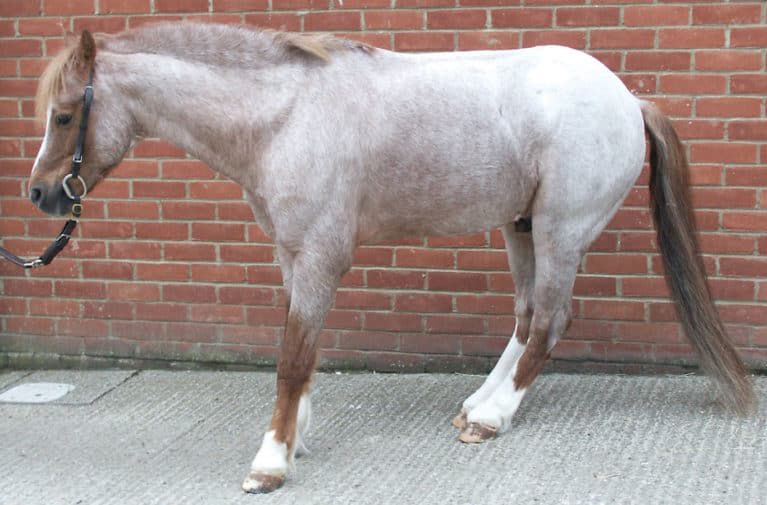
High sugar levels in early summer
Most cases of laminitis occur during May and June, which can be linked to the fact that many horses are turned out on pasture during this period. Many pastures contain high concentrations of sugar during this time. Research has shown that overconsumption of starch and fructan can trigger laminitis in horses. If you're concerned that your horse may develop laminitis or have a horse that is at risk, it may be a good idea to review the feed plan, the type of pasture the horse is grazing on, or consider avoiding pasture altogether. It may also be beneficial to limit access to grass by only allowing the horse to graze at night, as sugar levels in the grass generally rise during the daytime.
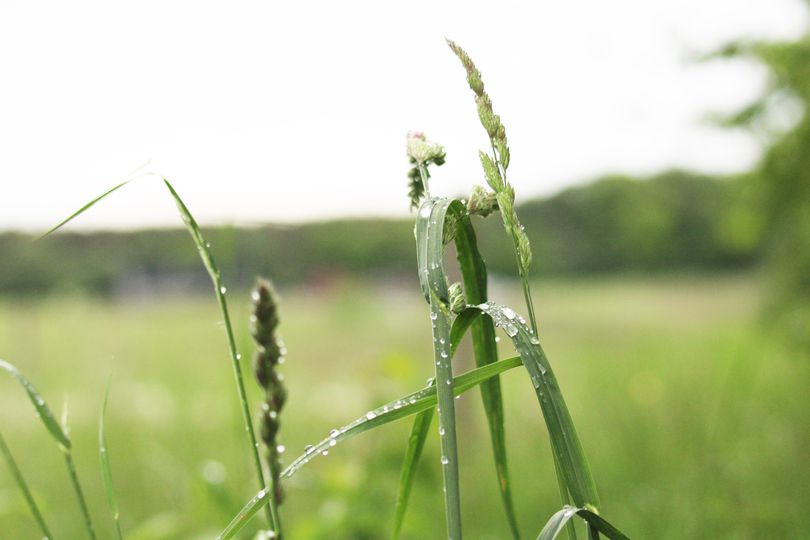
Different types of grass
Some grass species have lower sugar levels, while others are much higher in starch. Grass species like ryegrass and fodder lotus should be avoided, while meadow foxtail is considered to be a better option for horses prone to laminitis. It may also be a good idea not to let the horse out too early in the season onto lush pastures, as sugar levels are higher at that time
Many horse owners fear fertilizing their pastures, fearing that the horses will be more likely to develop laminitis if the grass is vigorous. This fear is unfounded. There is no evidence that protein is the cause of laminitis. On the contrary, it is beneficial to increase the protein content in the pasture to reduce the sugar levels.
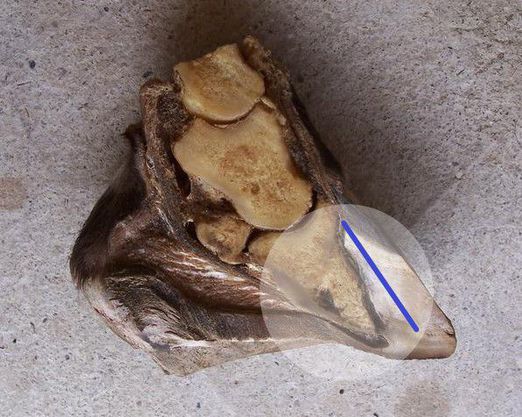
Laminitis hoof
In the picture, you see a cross-section of a hoof. The blue line indicates where the coffin bone would be if it were a healthy horse. This horse has suffered from laminitis and as a result, the coffin bone has rotated forward.
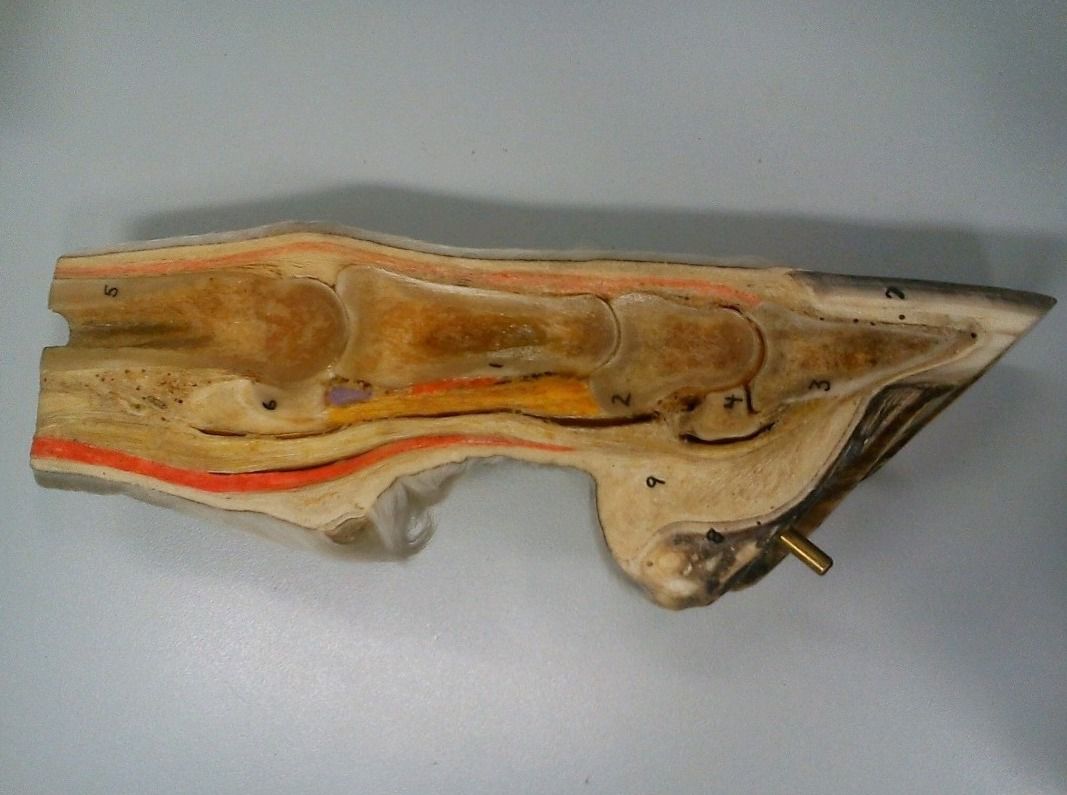
Healthy hoof
In the image above, you see a healthy hoof in cross-section where the coffin bone follows the hoof wall.
Laminitis Linked to Feeding Can Be Divided into the Following Two Main Groups:
As mentioned above, a high intake of starch or fructan can cause laminitis. This can occur either in a single instance or in smaller doses over a longer period. When non-structural carbohydrates (sugar or starch) reach the hindgut, they ferment quickly (broken down by microbes) and can cause disruptions in the hindgut microbiota. The bacteria that produce lactate are favored, and since lactate normally occurs in small amounts, high concentrations will lower the pH in the hindgut. This low pH will further favor the lactate-producing bacteria, which will reduce the numbers of beneficial bacteria, causing them to die. The death of these beneficial bacteria releases toxins, and some of the lactate-producing bacteria may produce toxins (poisons) as well. The lowered pH also impairs the protective barrier of the intestinal wall, and as a result, the toxins can enter the bloodstream through the damaged intestinal wall, leading to laminitis.
It is still not known why some horses develop laminitis while others do not, even though they graze on the same pasture or eat the same types of feed. There are theories suggesting that it may be due to different individuals having varying sensitivities physiologically in the hindgut area, and that the hindgut microbiota may differ between individuals.
Insulin is a hormone released after the horse eats to facilitate glucose (blood sugar) uptake by the cells. In insulin resistance, the body’s cells have a reduced sensitivity to insulin, making glucose uptake less efficient. A horse fed a starch-rich diet or one with high sugar content will experience an elevated insulin production as the body attempts to maintain normal glucose levels in the blood. Eventually, the cells become exhausted by the high levels of insulin and no longer respond as they should. This leads to persistent high blood sugar levels, and the body compensates by producing even more insulin, which eventually lowers blood sugar. When this happens in humans, the pancreas, which produces insulin, becomes exhausted, leading to diabetes. This does not seem to be the case in horses, although there are signs that compensated insulin resistance can progress to uncompensated insulin resistance, which leads to a decline in the pancreas' insulin production, thereby increasing blood glucose concentration.
It is not fully understood why insulin resistance can increase the risk of laminitis. However, it has been observed that there is a strong connection between laminitis and EMS. There are also studies showing that high insulin levels can induce laminitis even in healthy horses without a previous history of laminitis, insulin sensitivity issues, or EMS. This means that excessive levels of sugar or starch can be dangerous even for healthy horses. Insulin-resistant horses and those with EMS often exhibit significant fat deposition in the withers, around the tail base, behind the shoulder blades, and sometimes along the upper ribs.
EMS – Equine Metabolic Syndrome is a disease complex primarily involving reduced insulin sensitivity, episodes of laminitis, and obesity.


